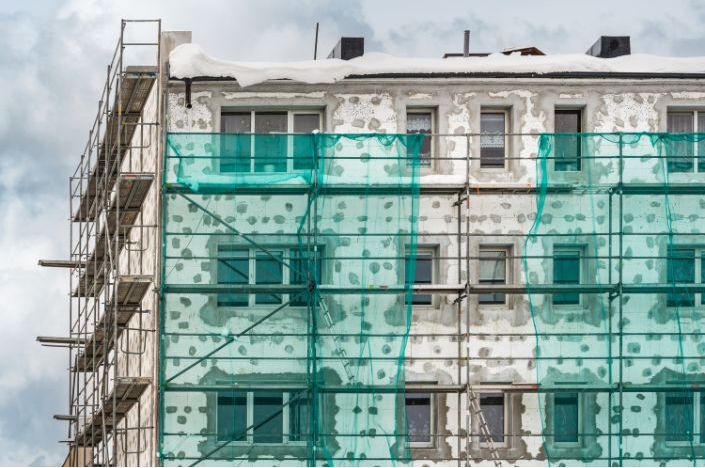In the ever-evolving landscape of architecture, the concept of adaptive reuse emerges as a progressive, urban up-cycling strategy that not only makes financial sense but also honors and repurposes existing structures. Beyond the narrow lens of cultural and heritage preservation, adaptive reuse is a multifaceted approach to transforming the built environment, redefining urban spaces for contemporary needs.
adaptive reuse
noun
: the renovation and reuse of pre-existing structures (such as warehouses) for new purposes
Unveiling the Purpose of Adaptive Reuse
Adaptive reuse stands at the forefront of forward-thinking urban development, bringing a host of benefits that extend beyond preserving cultural heritage:
1. Strategic Urban Renewal:
Adaptive reuse goes beyond the mere preservation of historical architecture. It acts as a strategic force for urban renewal, breathing new life into existing structures and redefining their purpose in a rapidly changing world.
2. Sustainable Urban Practices:
Unlike the unrestricted expansion associated with urban sprawl, adaptive reuse champions sustainability. By reimagining existing structures, it contributes to a more sustainable urban environment, minimizing the need for new construction and reducing the associated environmental impact.
3. Architectural Innovation:
Structures transformed through adaptive reuse become more than just symbols of the past; they evolve into contemporary beacons of architectural innovation. This approach encourages the fusion of historical charm with modern functionality, creating unique and aesthetically appealing urban spaces.
Embracing Adaptive Reuse: The Strategic Advantages
The decision to embrace adaptive reuse offers a myriad of advantages, positioning it as a compelling option for diverse projects:
1. Financial Prudence:
Adaptive reuse not only lowers construction costs but also strategically utilizes existing structures. Developers leverage cost-effective solutions by avoiding demolition expenses and tapping into local tax incentives and federal historic tax credits.
2. Timely Transformation:
Rehabilitating existing buildings is a quicker path to habitability compared to constructing new structures. This time-efficiency allows owners to open portions of the building for business sooner, enhancing the overall viability of the project.
3. Community-Centric Appeal:
Creative adaptive reuse projects resonate deeply within communities. Beyond historical preservation, people appreciate the revitalization of significant buildings, transforming them into unique landmarks that contribute to the evolving character of their neighborhoods.
A Guided Journey Through Adaptive Reuse
Embarking on an adaptive reuse project involves a systematic and forward-thinking approach:
1. Holistic Building Assessment:
A thorough analysis, ensuring structural integrity, lays the foundation for successful adaptive reuse. This investment in assessment prevents hidden costs and establishes a secure working environment.
2. Community-Centric Planning:
Understanding community interests and assessing the surroundings are integral to gauging the viability of an adaptive reuse project. This community-centric approach ensures the project aligns with the needs and aspirations of the local population.
3. Strategic Budgeting:
Detailed estimates from contractors align with budget considerations. Leveraging local tax incentives becomes crucial in balancing costs and ensuring the financial viability of the project.
4. Expert Team Collaboration:
Engaging a professional team, including restoration contractors and design experts, is essential. Collaboration with historic conservation professionals ensures the integrity of the structure is preserved throughout the transformation.
5. Meticulous Planning:
Working closely with the team, create comprehensive plans that determine which elements to reuse or replace. This meticulous planning respects the historical features and materials of the building, ensuring a seamless integration of the old and the new.
6. Careful Construction:
Initiating construction with special care to preserve viable materials is crucial. Avoiding harsh treatments or haphazard demolition approaches safeguards elements that contribute to the historical and aesthetic appeal of the finished product.
In essence, adaptive reuse emerges as a dynamic force reshaping urban spaces, embodying innovation, sustainability, and community engagement. It propels us towards a future where the past and present coexist harmoniously, creating urban structures that reflect the evolving needs of our cities.
Challenge yourself to look beyond what it is, and see the potential of what it could be. Office, retail, special-use… the possibilities are limited only to your creativity. If you have a property in mind for adaptive reuse, let us help you secure the right financing for your goals.
Remember, it costs nothing to explore your options. Contact us today at 888-959-1648 or by email at info@comcapfl.com to discuss how we can assist you or your clientelle.
Learn more about Commercial Capital Ltd., FL (ComCapFL) by visiting our About Us page.


Recent Comments